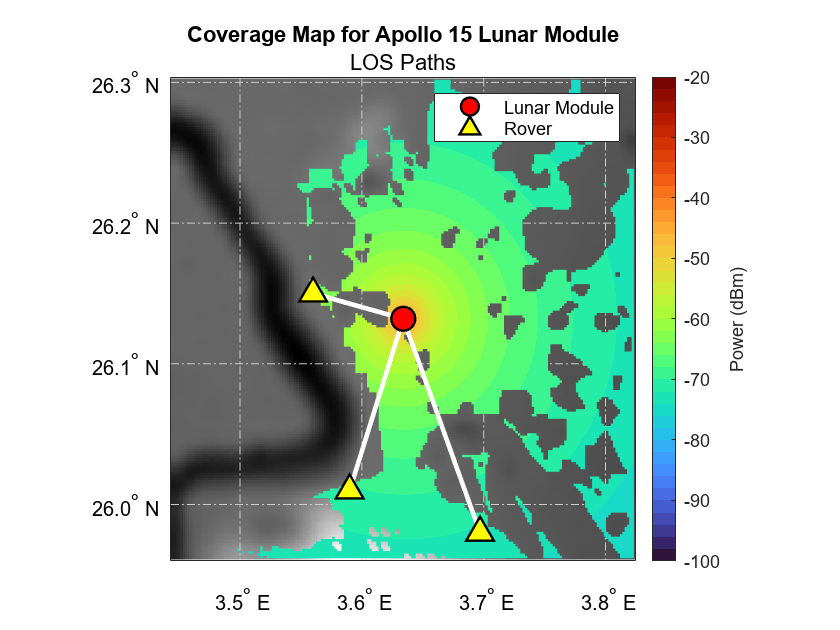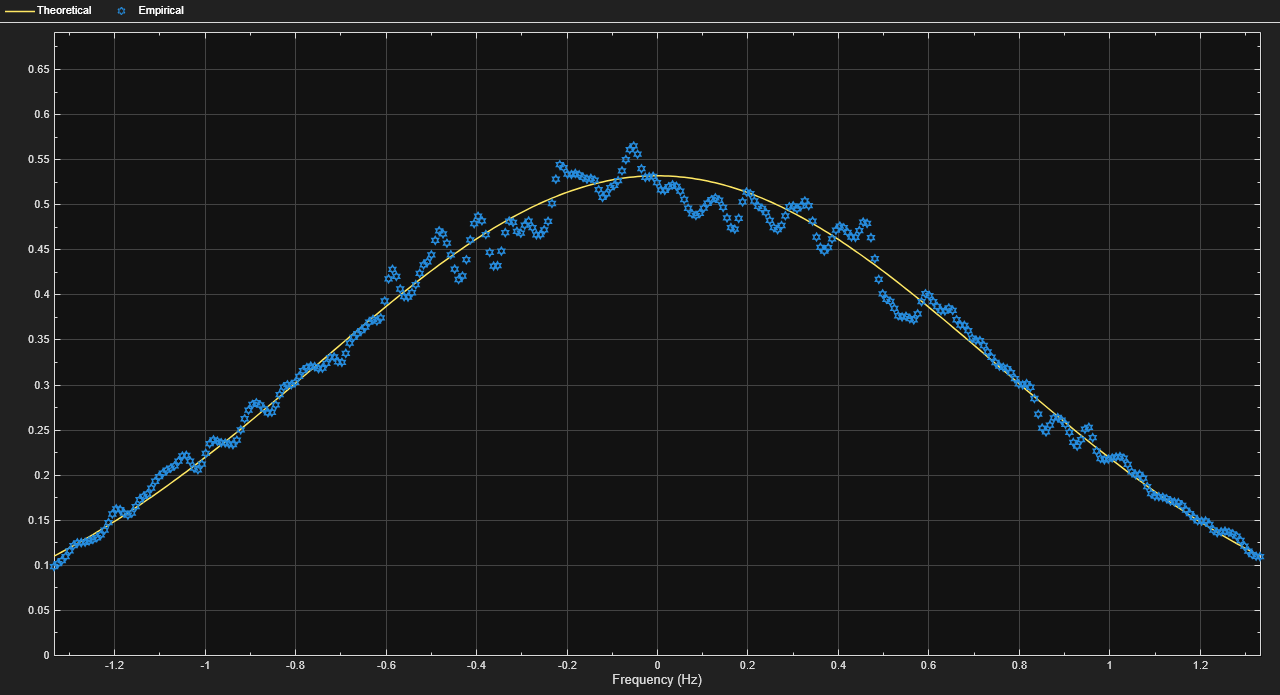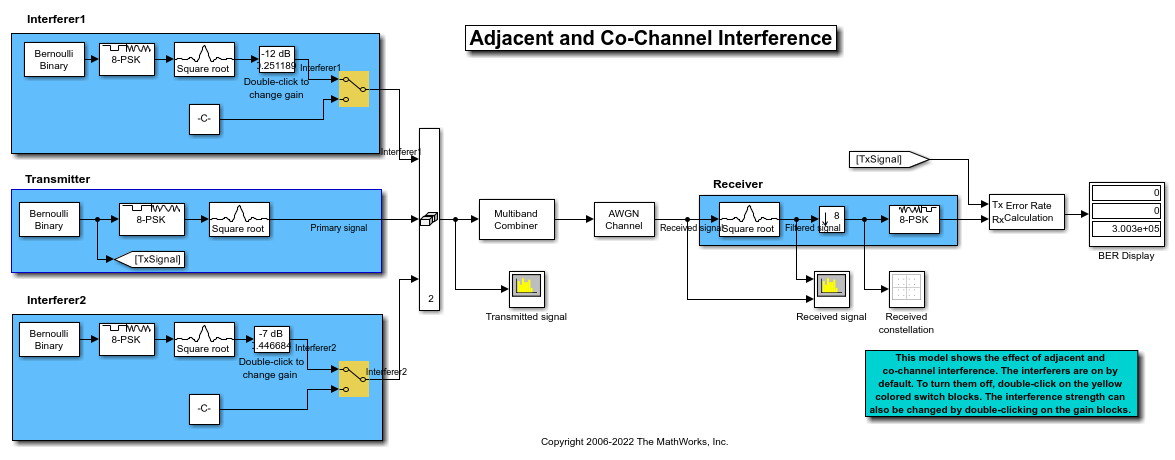Propagation and Channel Models
RF path propagation modeling describes the behavior of electromagnetic radiation from a point of transmission as the signal travels through the surrounding environment. Model RF propagation paths and visualize them in 3-D.
Channel modeling describes the over-the-air environment in communications system links. Analysis of propagation and channel modelling is essential in understanding how electromagnetic waves incur losses from a transmitter to a receiver in different scenarios. Model and visualize noisy SISO and MIMO channels that have Rayleigh, Rician, or WINNER II fading profiles. Atmospheric impairments and multiple Doppler spectrum shapes are also available.
Apps
| Wireless Channel Designer | Design and analyze wireless channels (Since R2025a) |
Functions
Objects
Blocks
Topics
RF Propagation
- Choose a Propagation Model
When to use the different propagation models based on frequency, type, and limitations. - RF Propagation and Visualization
Visualize coverage maps, SINR maps, and propagation paths in outdoor and indoor environments. - Ray Tracing for Wireless Communications
Ray tracing models predict propagation paths and corresponding losses using 3-D environment geometry and electromagnetic analysis. - Customize Buildings for Ray Tracing Analysis
Customize the buildings stored in an OpenStreetMap® file and then perform ray tracing analysis on a scene created from the buildings. (Since R2023b) - Accelerate Ray Tracing Analysis Using GPU
Perform accelerated ray tracing analysis using a GPU. (Since R2025a)
Channel Modeling
- AWGN Channel
Model channel and RF impairment characteristics. - Fading Channels
Defining a fading channel object and applying it to a signal. - Channel Visualization
These channel modeling System objects and blocks in Communications Toolbox™ include an option to visualize the characteristics of a fading channel. - WINNER II Channel
Model the WINNER II channel using the WINNER II Channel Model for Communications Toolbox add-on.












